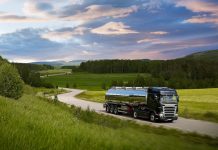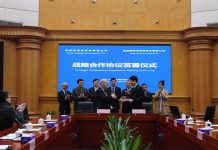Scania ‘s 2020 future plan is to utilise fossil free electricity wherever possible. This is Scania’s pledge for Earth Hour 2017. All electricity supplied for its operations in Denmark, France, Norway, Poland and Sweden is already fossil free.
Scania’s efforts in driving the shift towards sustainable transport systems is about developing smart and energy-efficient transport solutions, but also about streamlining the company’s own energy usage.
”Scania itself must be a forerunner in this shift. We place high demands on our suppliers to adhere to the highest environmental standards and deploy new and innovative technology. Many of our customers also have ambitious environmental targets,” says Anders Williamsson, Executive Vice President and Head of Purchasing, Scania.
Switching to fossil free energy leads to a significant reduction of the carbon emissions for a manufacturing company of Scania’s magnitude. Scania’s commitment however, is not limited to its production sites but includes all operations, not the least the hundreds of Scania workshops.
In Scandinavia, the energy supplied to Scania is primarily sourced from hydroelectric power plants. In France and Poland, wind and solar power is most common.
In countries without deregulated energy markets, Scania is unable to procure fossil free electricity. In these countries Scania will use available alternatives for carbon offsetting.
Scania’s goal is to conclude the shift to fossil free electricity by 2020 in all countries where these alternatives exist. At present, 79 percent of the electricity Scania purchases or generates internally derives from fossil free sources. Countries that are next in line to switch to 100% fossil free electricity are, among others, Italy, Netherlands and the UK.


























